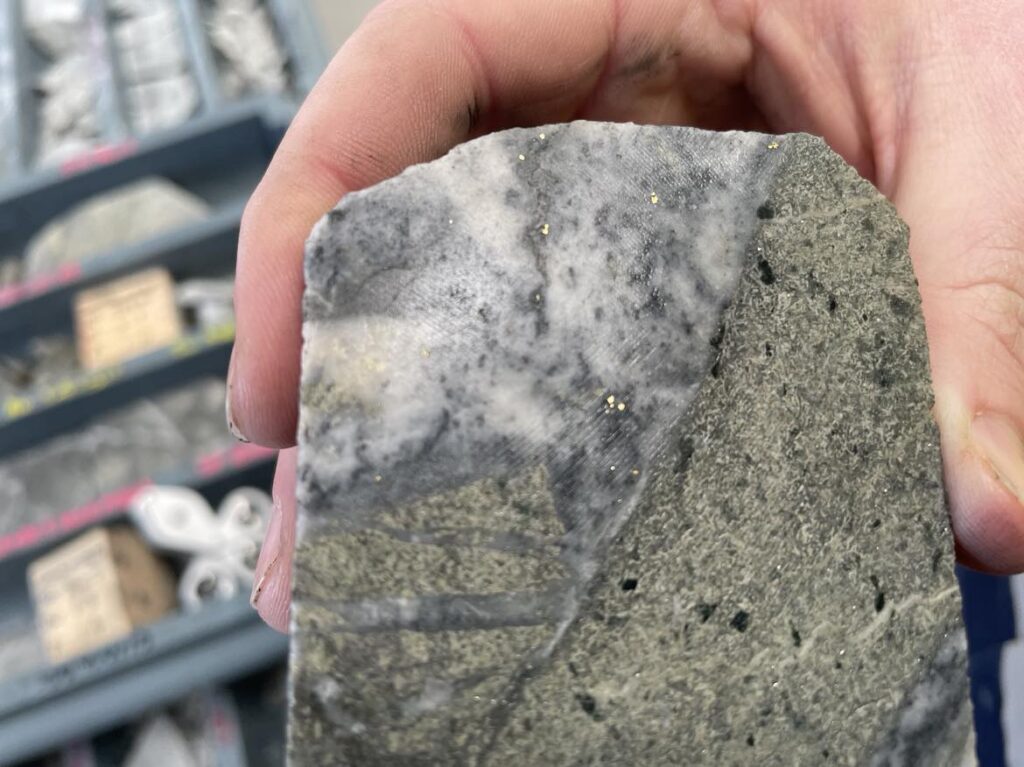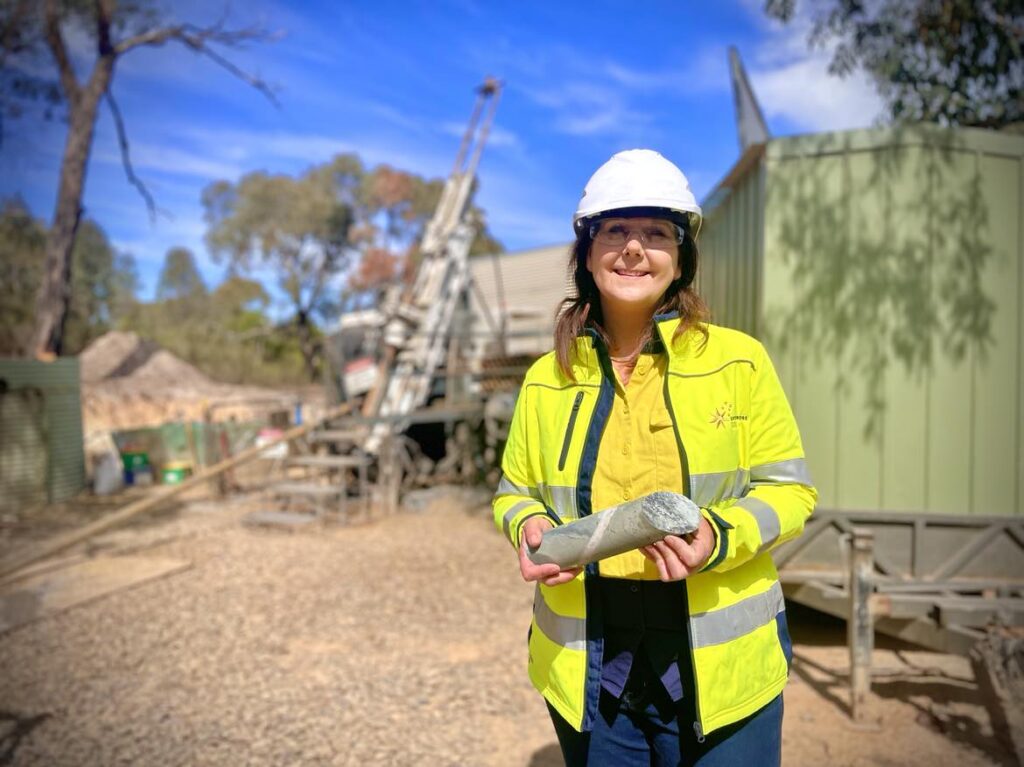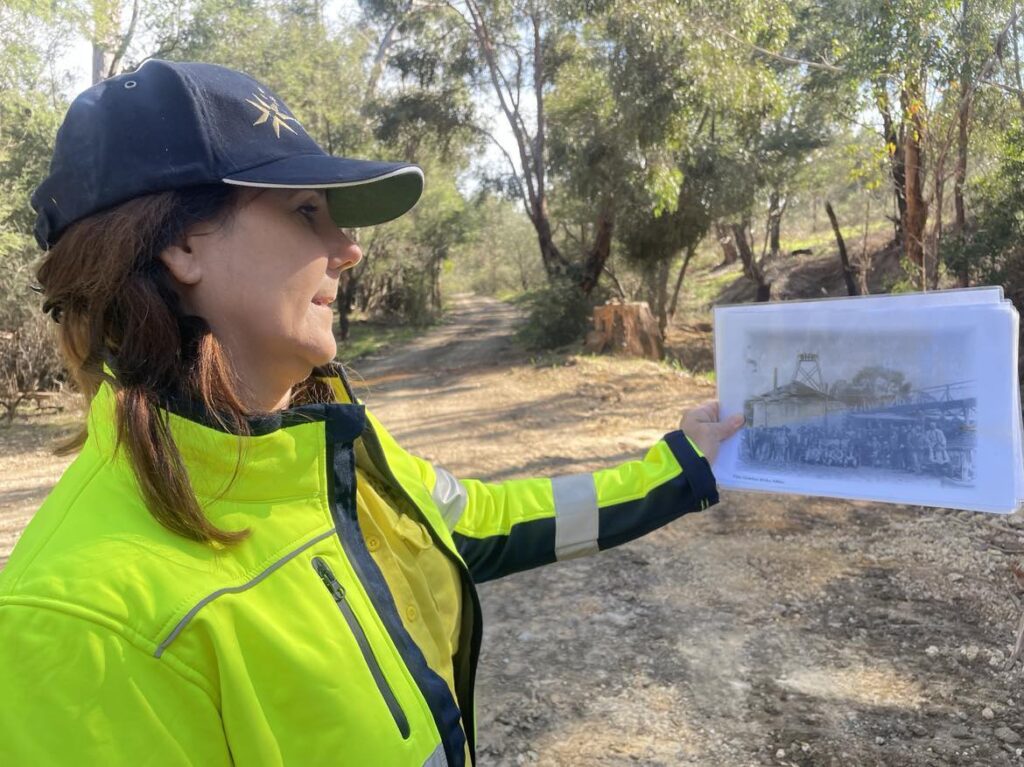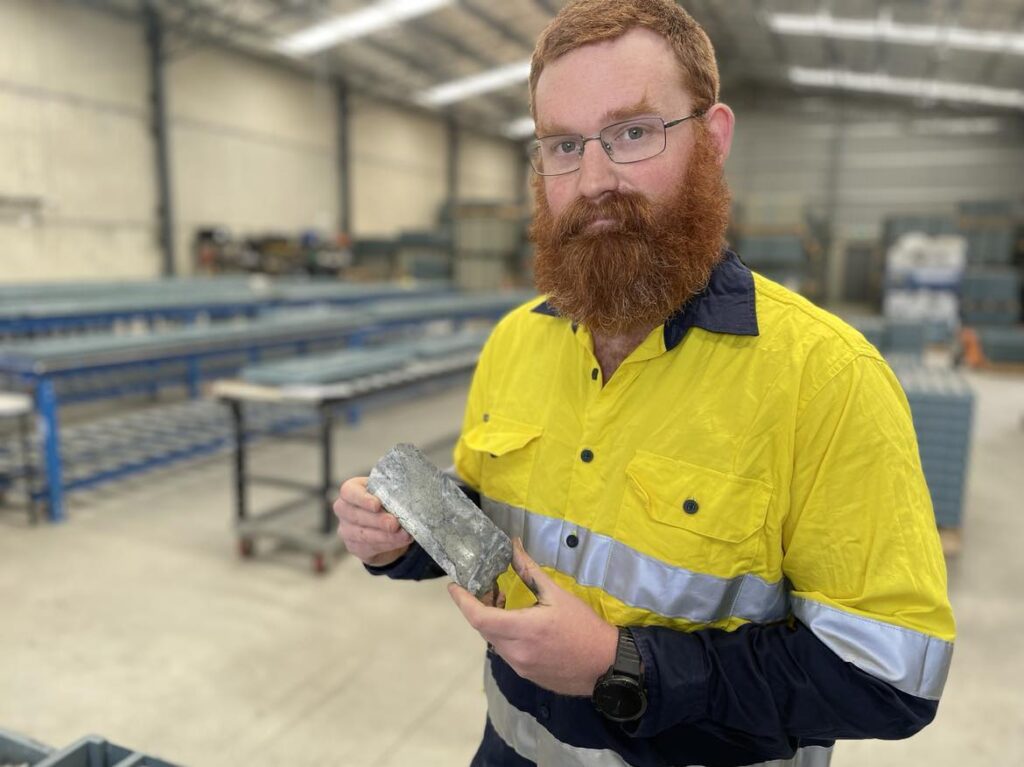Around the world and back – why this geo returned home in search of Victoria’s next major gold discovery
Mining
Mining
Rock kicker and entrepreneur Mike Hudson has scoured projects from New South Wales to Peru, Pakistan, Argentina, Finland and Portugal in between since stepping out of the University of Melbourne to get his boots on the ground at zinc producer Pasminco’s Broken Hill mine in the 1990s.
Go figure that his real treasure could be found virtually in his backyard, just minutes from his home town of Kilmore, 75km north of Melbourne.
Several generations of his family have passed through, a legacy strong enough to have a local park named in their honour.
A stone’s throw away is the abandoned Clonbinane Goldfields, where bush tracks now run through a dense hilly forest regrown since 2009’s Black Saturday bushfires, but where in the late 1800s a community of 2000 sprouted around miners who dug high grade gold from veins that ran east to west beneath the brush.
Since the middle of last year Hudson has steered the ship at Southern Cross Gold (ASX:SXG), hoping to make a discovery in the style of the legendary Fosterville gold mine across 20,000 hectares of exploration ground known as the Sunday Creek project.
“It’s an irony of having a wanderlust as a geo in his 30s and then to come back in my early 50s and I went to a little school of 10 kids maximum that overlooked the project,” he said.
“And I think I discounted my backyard as a 30-year-old, just because I had the wanderlust to travel, and now I’m very thankful that I’m an hour away from the drill rig.”

Shares in Southern Cross Gold have lifted 300% or 4x since it was spun out of TSX explorer Mawson Gold in May last year.
That came initially off hits like 119.2m at 3.9g/t gold equivalent, 42m at 4.8g/t AuEq and 305m at 2.4g/t AuEq last year before the heat came off as gold explorers fell out of favour with investors.
But a drill hit early last month of 404m at 5.1g/t gold and 5.6g/t AuEq, intersecting 13 high grade veins, brought the market back to the party.
SXG shares are up over 50% since the start of September.
Leading that drill program onsite is former Newmont principal geologist Lisa Gibbons, another globetrotting rock scientist whose achievements include major discoveries at the world’s biggest miner’s Tanami project in the Northern Territory.
Like Hudson she has strong links to the community, living just 6km from the Sunday Creek drill site.
In fact, her farm sits on an SXG exploration permit.
“It (the Tanami) was virgin land for geologists, and we found some really good walk up targets that turned into mines,” Gibbons said.
“The stunning thing is we’re here in Victoria, it’s been mined since the 1850s and yet it’s still so underexplored.
“And to me, that’s the amazing potential here. We’re still seeing gold on surface like we would in the Tanami.”

Multiple instances of visible gold have been intersected already in the next hole to be sampled after the success of SDDSC077B, SDDSC082. Not ‘nuggetty’ like the Bendigo and Ballarat gold fields, SXG is looking for the jewellery box style mineralisation that has made Fosterville, around an hour to the north, so successful.
Owned by Canada’s Agnico-Eagle, the world’s third most prolific gold miner, Fosterville contains the Swan Zone. Discovered in 2016 and initially grading almost 50g/t, it turned the operation into Australia’s best performing gold mine.
In 2022, Fosterville produced 338,327oz of gold at just US$378/oz without any by-product credits — delivering the sort of margins only seen nowadays by lithium producers and iron ore majors.
Sunday Creek sits in the Melbourne Zone, while Fosterville and the nearby Costerfield mine operated by TSX listed Mandalay Resources are nominally within the multi-million ounce Bendigo Zone, Victoria’s most prolific gold field.
But Hudson says Sunday Creek was formed through the same geological event as Fosterville, something that gives hope it could bear more similarities to the legendary mine.
“It’s not really a Melbourne-Bendigo Zone thing it’s just understanding what’s known in the technical literature for 30-plus years that there’s two very different orogenic events in Victoria,” he said.
“The event which matters, the Epizonal event, formed 70 million years later. It formed Fosterville, it formed Sunday Creek, Costerfield, Walhalla, which is 8 million ounces.
“And then the jewellery boxes that can come as they transition from about 700-800 metres below surface, which has happened at Fosterville of course and what made it famous with the Swan Zone, Costerfield, which is happening now if you look at some of their deeper drilling.
“And obviously what we’re finding now with those jewellery boxes in that transition.”
One reason interest declined in the Clonbinane Goldfields was the presence of stibnite, a mineral containing the metal antimony.
It meant that back in the day, when processing technology was less advanced, only around half of the gold could be extracted by conventional means.
Aside from leaving historic stockpiles dating back decades with 3-4g/t ore in them, it meant the Sunday Creek deposits were alternately mined for very different purposes.
Historically used to case bullets, antimony from Sunday Creek was sold to the Germans ahead of World War I before the site was requisitioned by the Australian Government for the same purpose during the war.
Nowadays antimony is a sought after commodity for more than just defence purposes — much of it goes into solar cells to clarify the glass, it is heavily used as a flame retardant in plastics, in lead batteries, EVs, semiconductors, and in liquid metal batteries invested in by Microsoft multi-billionaire Bill Gates.
The only significant producer in Australia is the Costerfield mine, but SXG thinks it could be found in even higher quantities at Sunday Creek based on drill hits to date.
A critical mineral with a supply chain highly controlled by China and Russia, it could provide political capital for a future development, even though gold is expected to make up the bulk of the revenue.
“Now it’s a very important product for us, no doubt, because it is genuinely that Sunday Creek will be a major contributor to rebuilding the Western world’s supply chain, with 82% of production and refining and smelting and mining controlled by Russia and China,” Hudson said.
“Its criticality is really around military applications and the US are all over that.”
Around 20% of the 100,000tpa primary market for antimony, Hudson says, is supplied from a smelter in Oman, the first primary smelter in the West in 40 years when it was built in 2012.
But he says there are opportunities elsewhere, including a close Australian trade partner in Japan.
“Antimony is a small little market that has the opportunity to really be the poster child for recreating the supply chain,” he said.

Hanging over the heads of all the miners in Victoria is the State’s invidious history with project permitting.
While brown coal mines, quarries, a handful of gold mines and more operate there, it ranks below some West African jurisdictions — yes, the ones whose governments have been deposed in coups — in the latest Fraser Institute Mining Attractive Index.
“I always say that Victoria is a bit like Mexico, right? You can go and swim in a cenote and have a nice holiday in Mexico or you can go and get your head chopped off depending on which part of Mexico you go,” Hudson quipped.
“It’s sort of the same in Victoria. Just avoid the places where, figuratively, you’re going to get your head chopped off.”
While many historic gold operations still operate now or have until recent times, the underground development at Fosterville two decades ago was among the last mines in the State to receive a mining licence.
But Gibbons says Victoria sometimes gets a bad rap. Among the benefits at Sunday Creek is SXG’s ability to complete low impact exploration, under exploration laws she calls some of the most progressive in the country.
SXG’s contractors use repurposed underground drill rigs which can sink diamond holes for over a kilometre into the ground on a footprint little bigger than a Fitzroy townhouse.
“I think in the past, mining wasn’t ready for Victoria but with the growth in ESG, and the growth of how we’re thinking about new mines, I think now we’re ready to come back into Victoria,” she said.
“We have the environmental and the community credentials to work in Victoria.”

So far Southern Cross has tested a line of targets from the historic Clonbinane mines of Rising Sun to Apollo and a further 8km east through satellite targets known as Leviathan, Consols and Tonstal.
Gibbons says the fact mineralisation in the Melbourne Zone extends from surface and there is no cover in the form of the Murray River Basin sediments obscuring the ore at Sunday Creek makes it highly prospective for more finds.
Another 26,000m of drilling is planned by April next year, but Hudson said SXG is under no hurry to get a resource out before it has an idea of the size of the prize.
“We are obviously working hard internally to understand the controls on mineralisation and we’ve got a resource geo working with us now to build an internal model,” Hudson said.
“We don’t know exactly where we’re at yet because we’re just starting to pivot from exploration and see how big this thing could get, to really focusing the four rigs now around those high grade areas at Rising Sun and Apollo, not to drill them out but to focus on those areas and expand beyond those.
“So we talk about a resource potentially by mid next year. But it just depends on where you’re at, where the market’s at and where the project’s at and we’ll give very clear guidance.
“But the way that I’ve been trained in the Canadian market is to create large and significant assets and that’s how I believe our shareholders will benefit the most.
“By us creating a very rare Tier-1 asset at very high grades and multi-millions of ounces rather than trying to focus into too much detail too quickly.”
As that progresses so will the question of ownership and institutional support. TSX-listed Mawson currently holds around 51% of SXG while one of its backers, the aforementioned Newmont, has exited the parent company.
Of intrigue is a network of investors linked to Pierre Lassonde — chairman of royalty giant Franco Nevada and the inspiration for the Lassonde Curve — who has spoken publicly about his interest in the Sunday Creek discovery.
“Mawson’s holding in Southern Cross as the largest shareholder is escrowed until May 16, 2024,” Hudson, who is also Mawson’s chairman, said.
“I wear two hats, so I won’t be in the room when those decisions are made at Mawson. But we’re working with Mawson to unlock that post escrow.”